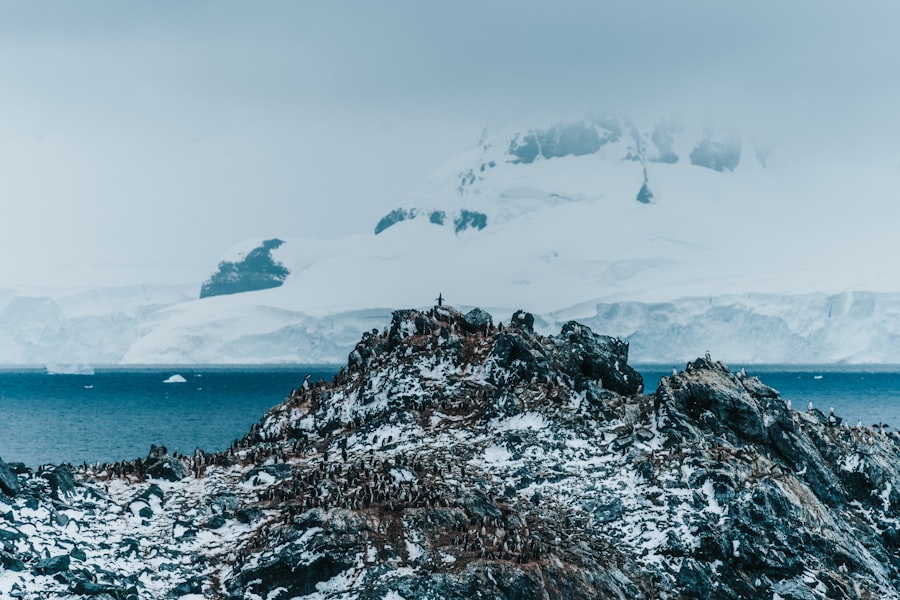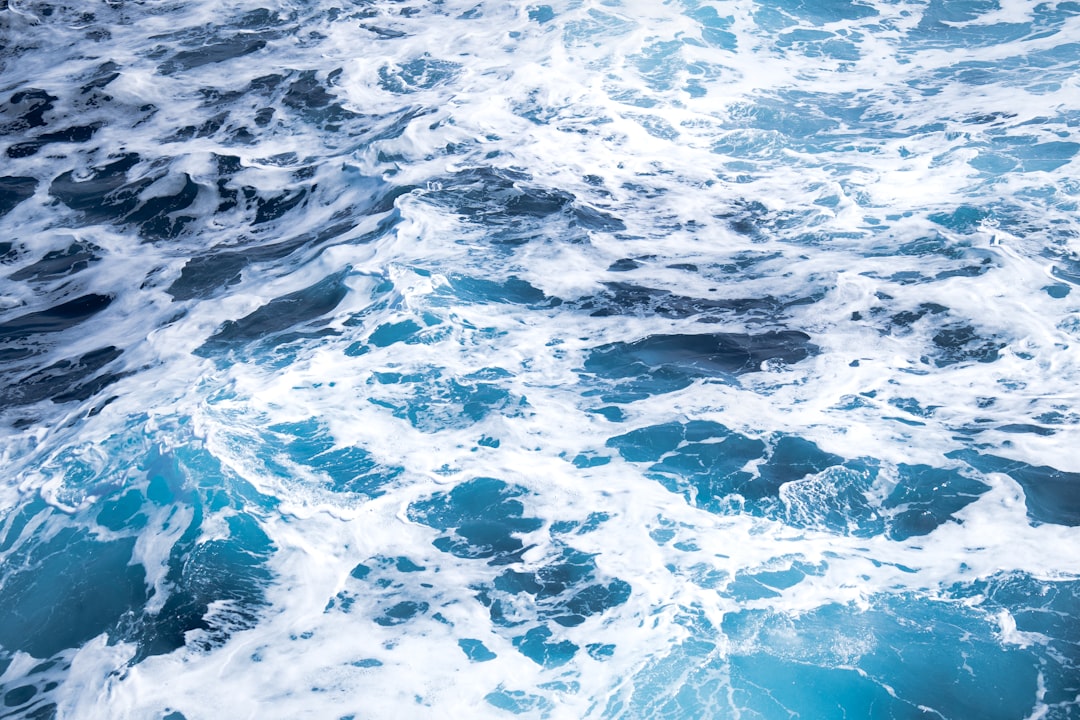The Drake Passage, a body of water that separates South America from Antarctica, is renowned for its tumultuous seas and breathtaking vistas. Named after the English explorer Sir Francis Drake, who navigated these waters in the late 16th century, the passage has become a focal point for adventurers, researchers, and wildlife enthusiasts alike. Stretching approximately 600 kilometers (370 miles) between Cape Horn and the Antarctic Peninsula, the Drake Passage is not only a critical maritime route but also a unique ecological zone that plays a significant role in global oceanic currents.
Navigating the Drake Passage is often considered a rite of passage for those venturing to Antarctica. The waters are notorious for their unpredictable weather and rough seas, which can challenge even the most seasoned sailors. However, the allure of the passage lies not only in its challenges but also in its stunning natural beauty and rich biodiversity.
As travelers embark on their journeys through this remarkable stretch of ocean, they are often met with awe-inspiring landscapes and the promise of unforgettable encounters with wildlife.
Key Takeaways
- Drake Passage is a body of water located between the southern tip of South America and the northern tip of Antarctica, known for its challenging weather and strong currents.
- The geographical significance of Drake Passage lies in its role as the only connection between the Pacific and Atlantic Oceans, allowing for the circulation of water and marine life between the two.
- Weather and climate patterns in Drake Passage are characterized by strong winds, rough seas, and rapidly changing conditions, making it one of the most challenging maritime routes in the world.
- Navigational challenges in Drake Passage include the presence of icebergs, strong currents, and unpredictable weather, requiring careful planning and experienced crew members.
- Wildlife encounters in Drake Passage are a highlight of the journey, with opportunities to see a variety of marine life including whales, seals, and seabirds in their natural habitat.
Understanding the geographical significance of Drake Passage
The geographical significance of the Drake Passage extends beyond its role as a maritime corridor; it serves as a vital link between the Atlantic and Pacific Oceans. This connection facilitates the movement of water masses, influencing global ocean currents and climate patterns. The passage is characterized by its deep waters, which reach depths of over 3,000 meters (9,800 feet), making it one of the deepest oceanic regions in the world.
The unique topography of the seafloor, combined with the strong currents that flow through the passage, creates an environment that is both dynamic and complex.
This isolation has led to a distinct biodiversity that is unique to the region.
The convergence of cold Antarctic waters with warmer currents from the north creates nutrient-rich upwellings, supporting a diverse array of marine organisms. As such, the Drake Passage is not only significant for navigation but also for scientific research and conservation efforts aimed at understanding and preserving its unique ecosystems.
Weather and climate patterns in Drake Passage

The weather in the Drake Passage is notoriously unpredictable, characterized by rapidly changing conditions that can shift from calm to stormy within moments. The region experiences strong winds, particularly during the winter months when storms are more frequent. These winds can create large swells and rough seas, making navigation challenging for vessels traversing the passage.
The average wind speed can reach up to 30 knots, with gusts often exceeding this figure, contributing to the passage’s reputation as one of the most treacherous waterways in the world. In addition to wind, precipitation is common in the Drake Passage, with rain and snow occurring throughout the year. The climate is influenced by its proximity to Antarctica, resulting in cooler temperatures that can drop significantly during winter.
Despite these harsh conditions, summer months (November to March) offer relatively milder weather, attracting many travelers eager to explore this remote region. Understanding these weather patterns is crucial for anyone planning to cross the Drake Passage, as they can significantly impact travel plans and safety.
Navigational challenges in Drake Passage
| Challenge | Impact | Solution |
|---|---|---|
| Strong currents | Difficulty in maintaining course | Use of advanced navigation systems |
| Icebergs and pack ice | Risk of collision | Constant monitoring and radar detection |
| Unpredictable weather | Unsafe sailing conditions | Close coordination with meteorological services |
Navigating the Drake Passage presents numerous challenges that require careful planning and expertise. The combination of strong currents, unpredictable weather, and shifting icebergs creates a complex maritime environment that demands respect from sailors and navigators alike. The passage is known for its rough seas, which can lead to significant discomfort for passengers on board vessels.
As such, it is essential for captains to be well-versed in local conditions and equipped with advanced navigational tools to ensure safe passage. Additionally, icebergs pose a significant hazard in the Drake Passage, particularly during certain times of the year when they drift southward from Antarctica. These massive ice formations can be difficult to spot in rough seas and low visibility conditions.
Mariners must remain vigilant and employ radar systems to detect potential obstacles in their path. The combination of these navigational challenges makes crossing the Drake Passage an endeavor that requires skill, experience, and a thorough understanding of maritime safety protocols.
Wildlife encounters in Drake Passage
The Drake Passage is a haven for wildlife enthusiasts, offering opportunities to encounter a diverse array of marine life. The nutrient-rich waters support an abundance of krill, which serves as a primary food source for various species of whales, seals, and seabirds. Travelers crossing the passage often have the chance to spot majestic humpback whales breaching the surface or orcas hunting in pods.
These encounters provide a glimpse into the rich marine ecosystem that thrives in this remote region. In addition to whales, seabirds such as albatrosses and petrels are commonly seen soaring above the waves. These birds are well adapted to life at sea and can cover vast distances while searching for food.
The sight of these magnificent creatures gliding gracefully over the water adds to the allure of navigating the Drake Passage. For many travelers, these wildlife encounters are among the most memorable aspects of their journey, highlighting the importance of conservation efforts aimed at protecting these fragile ecosystems.
Historical significance of Drake Passage

The historical significance of the Drake Passage is deeply intertwined with exploration and maritime history. Sir Francis Drake’s expedition in 1578 marked one of the first recorded crossings of this treacherous waterway, paving the way for future explorers seeking new trade routes and territories. Over the centuries, numerous expeditions have traversed these waters, contributing to our understanding of geography and navigation.
The passage has also played a crucial role in scientific research and exploration of Antarctica. In the 19th century, explorers such as Ernest Shackleton and Robert Falcon Scott ventured through the Drake Passage on their quests to reach the South Pole. Their journeys not only advanced our knowledge of polar regions but also highlighted the challenges faced by early explorers in navigating these harsh environments.
Today, researchers continue to study the passage’s unique ecosystems and climate patterns, underscoring its ongoing importance in scientific inquiry.
Safety precautions and preparations for crossing Drake Passage
Crossing the Drake Passage requires careful preparation and adherence to safety protocols to ensure a smooth journey. Travelers should be aware of potential seasickness due to the rough waters and take preventive measures such as bringing motion sickness medication or wearing acupressure bands. It is advisable to consult with medical professionals before embarking on such a journey to address any health concerns.
Additionally, travelers should familiarize themselves with safety procedures on board their vessel. This includes understanding emergency protocols, knowing where life jackets are located, and participating in safety drills conducted by crew members. Proper attire is also essential; layering clothing is recommended to accommodate fluctuating temperatures and weather conditions.
By taking these precautions seriously, travelers can enhance their safety and comfort while navigating this challenging passage.
Tips for a smooth and enjoyable journey through Drake Passage
To ensure a smooth and enjoyable journey through the Drake Passage, travelers should consider several practical tips. First and foremost, choosing a reputable tour operator with experience navigating these waters is crucial. Experienced crews are better equipped to handle unpredictable conditions and provide valuable insights into local wildlife and geography.
Travelers should also remain flexible with their plans, as weather conditions can change rapidly in this region. Being open to adjustments in itineraries can lead to unexpected adventures or sightings that enhance the overall experience. Additionally, engaging with fellow travelers on board can foster camaraderie and create lasting memories as they share their experiences crossing this iconic waterway.
Recommended activities and excursions in Drake Passage
While crossing the Drake Passage itself is an adventure worth experiencing, there are numerous activities and excursions that travelers can enjoy during their journey. Many tour operators offer guided wildlife watching excursions where passengers can observe whales, seals, and seabirds up close. These excursions often include educational components led by knowledgeable naturalists who provide insights into the region’s ecology.
Photography enthusiasts will find ample opportunities to capture stunning landscapes and wildlife encounters throughout their journey. The dramatic seascapes and unique lighting conditions create perfect settings for breathtaking photographs. Additionally, some operators offer kayaking excursions that allow travelers to explore smaller coves and get closer to marine life while enjoying an intimate experience with nature.
Environmental conservation efforts in Drake Passage
Environmental conservation efforts in the Drake Passage are vital for preserving its unique ecosystems and biodiversity. Various organizations work tirelessly to monitor marine life populations and assess environmental impacts resulting from human activities such as tourism and fishing. These efforts aim to promote sustainable practices that minimize harm to delicate habitats while allowing for responsible exploration.
One notable initiative involves establishing marine protected areas (MPAs) within the region to safeguard critical habitats for species such as penguins and seals. These MPAs help regulate fishing activities and mitigate potential threats posed by climate change and pollution. By raising awareness about conservation issues among travelers and encouraging responsible behavior during visits, stakeholders hope to foster a greater appreciation for this remarkable environment.
Reflecting on the unique experience of navigating Drake Passage
Navigating the Drake Passage is an experience that leaves an indelible mark on those who undertake it. The combination of breathtaking landscapes, rich biodiversity, historical significance, and navigational challenges creates a journey unlike any other. As travelers reflect on their experiences crossing this iconic waterway, they often find themselves filled with awe at nature’s power and beauty.
The passage serves as a reminder of both humanity’s adventurous spirit and our responsibility to protect fragile ecosystems. By embracing sustainable practices and supporting conservation efforts, travelers can help ensure that future generations will have the opportunity to experience the wonders of the Drake Passage just as they did. Ultimately, crossing this remarkable stretch of ocean becomes not just a journey through water but an exploration of nature’s grandeur and resilience.
The Drake Passage, a significant body of water located between the southern tip of South America and Antarctica, is renowned for its depth and challenging navigation conditions. This passage reaches depths of up to 15,700 feet (4,800 meters), making it one of the deepest and most treacherous sea routes in the world. For those interested in exploring more about the geographical and oceanographic features of the Drake Passage, a related article can be found on MyGeoQuest. This article delves into the unique characteristics and historical significance of this maritime corridor. You can read more about it by visiting com/sample-page/’>this page.
WATCH NOW! Drake Passage: Earth’s Deadliest Waters Revealed
FAQs
What is Drake Passage?
Drake Passage is the body of water between the southern tip of South America at Cape Horn and the South Shetland Islands of Antarctica. It connects the southwestern part of the Atlantic Ocean with the southeastern part of the Pacific Ocean.
How deep is Drake Passage?
The average depth of Drake Passage is around 11,000 feet (3,400 meters). However, there are areas where the depth can reach up to 13,000 feet (4,000 meters).
Why is Drake Passage significant?
Drake Passage is known for its strong and unpredictable winds and currents, making it one of the most challenging and dangerous waterways to navigate. It is also a key location for the mixing of cold Antarctic waters with warmer waters from the north, which has a significant impact on global ocean circulation and climate.
What wildlife can be found in Drake Passage?
Drake Passage is home to a diverse range of wildlife, including various species of seabirds, seals, and whales. It is also a popular feeding ground for marine life due to the upwelling of nutrient-rich waters.
Are there any human settlements in Drake Passage?
No, Drake Passage is uninhabited by humans. It is primarily used for scientific research, tourism, and maritime transportation.
